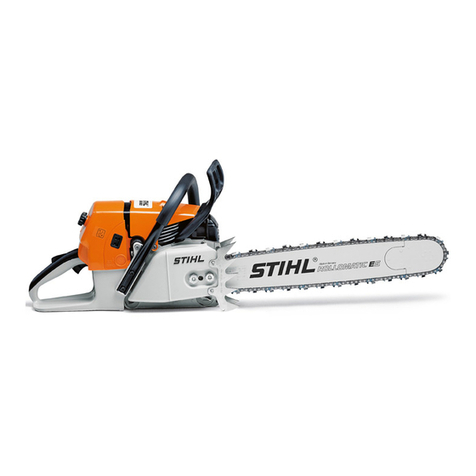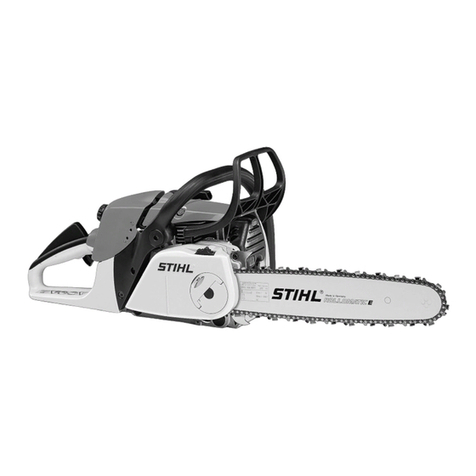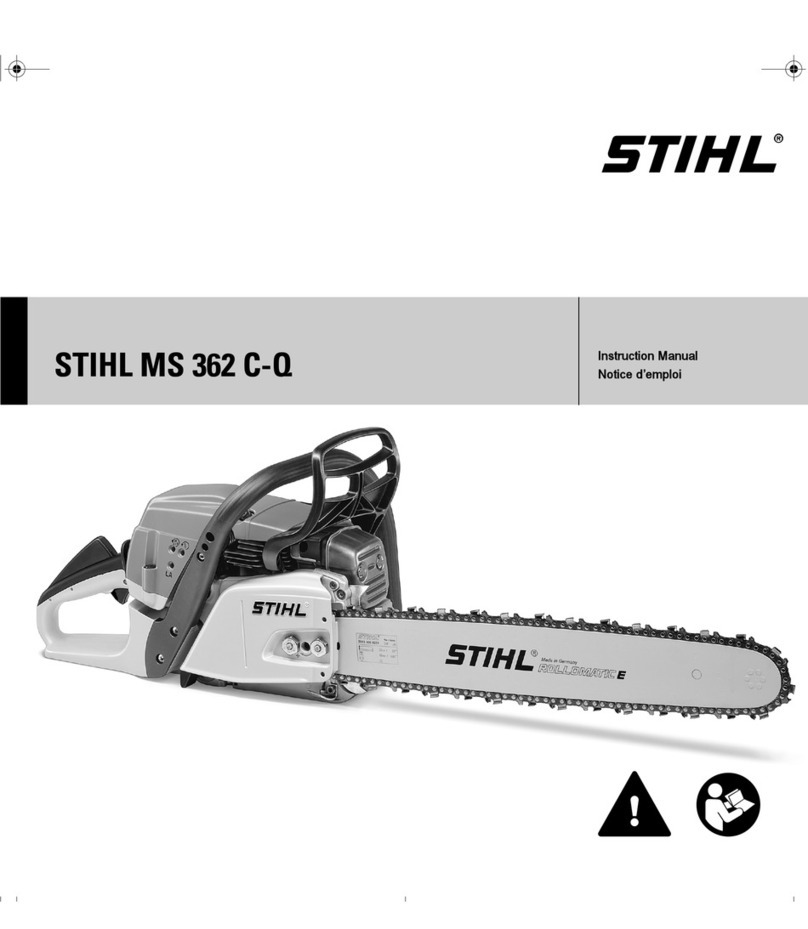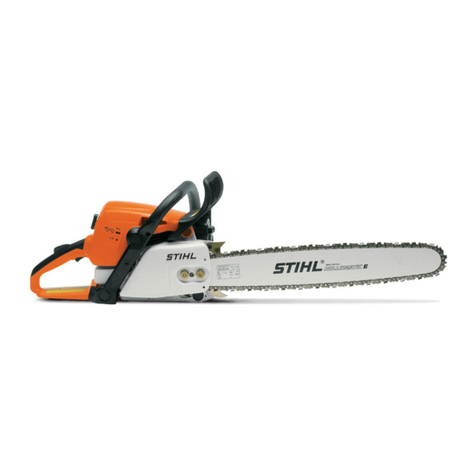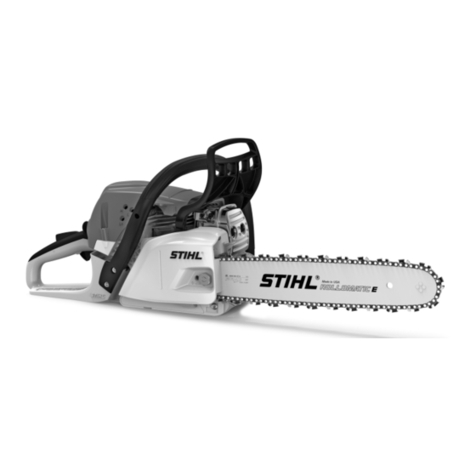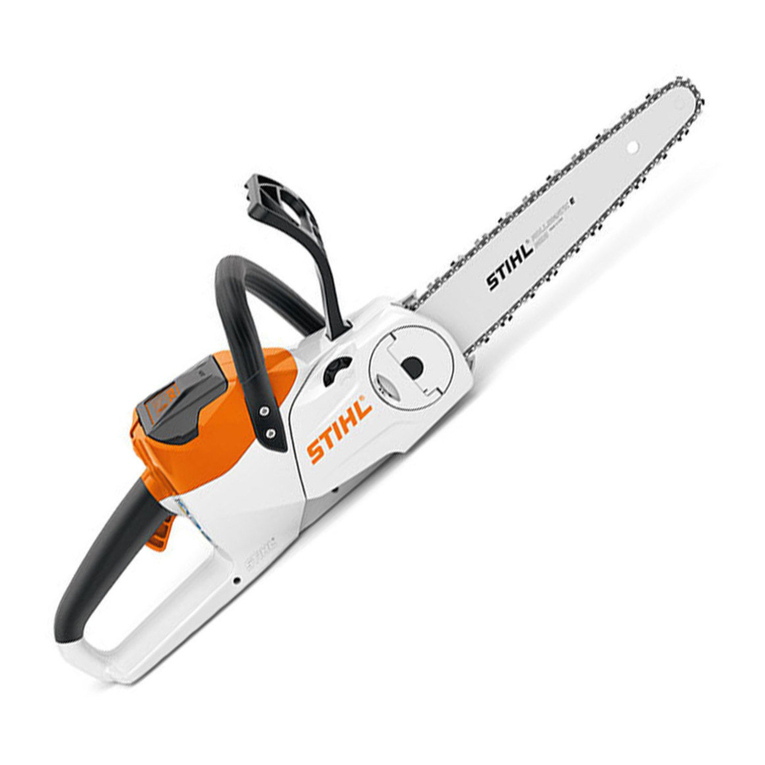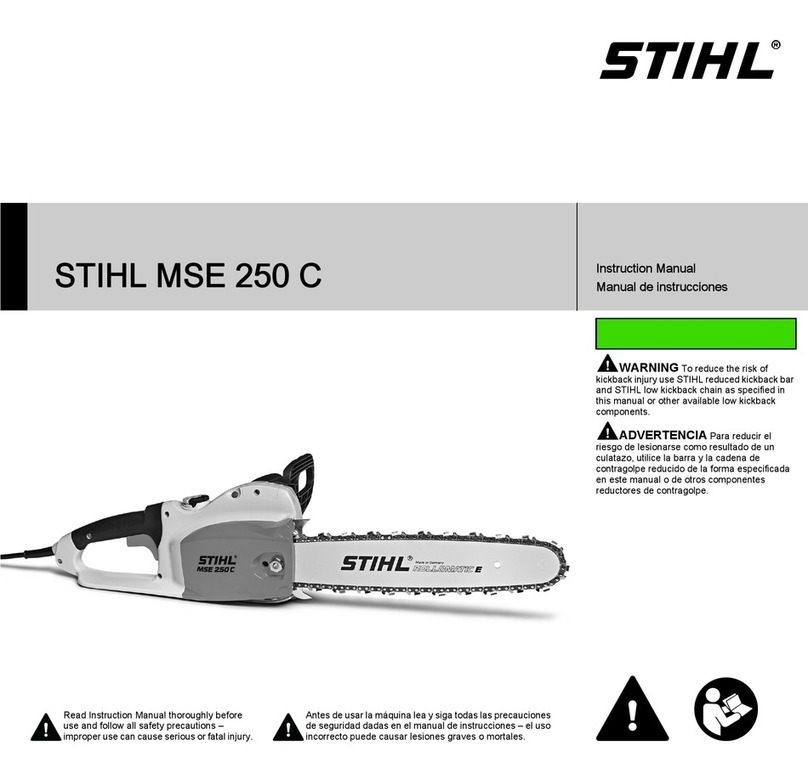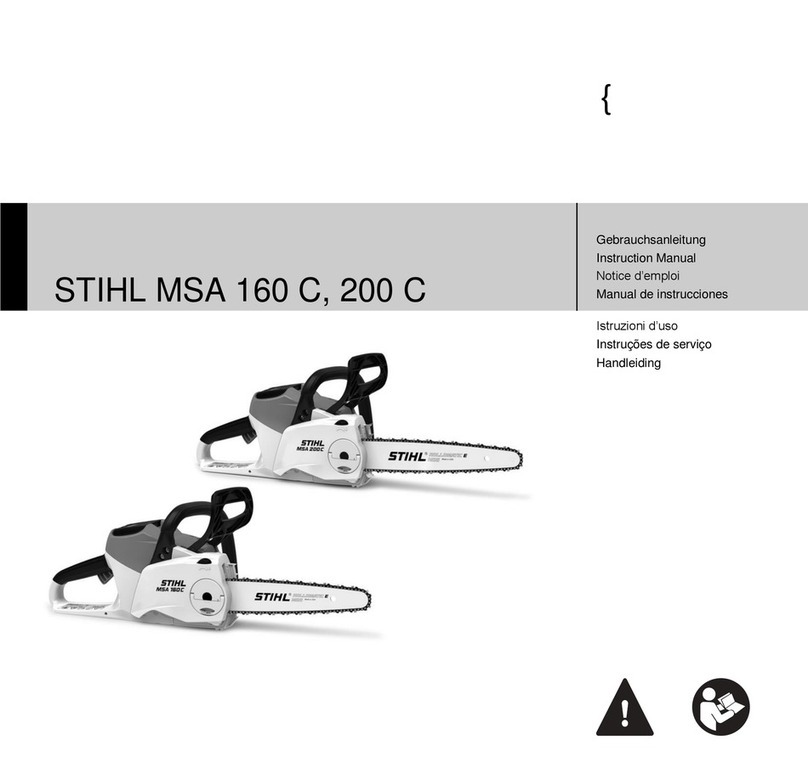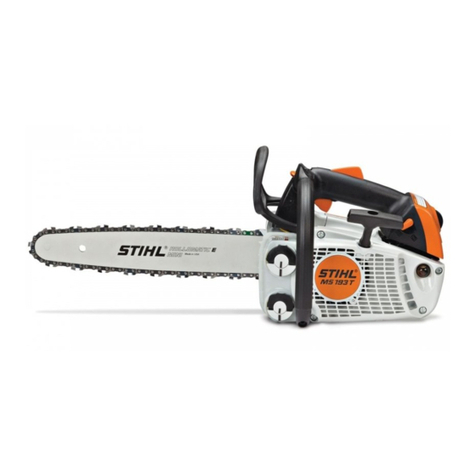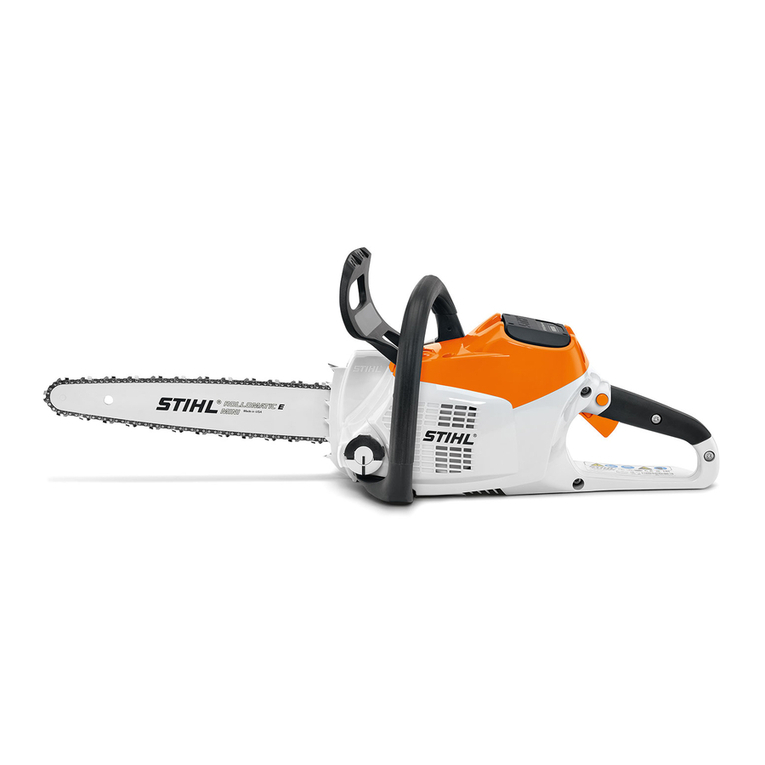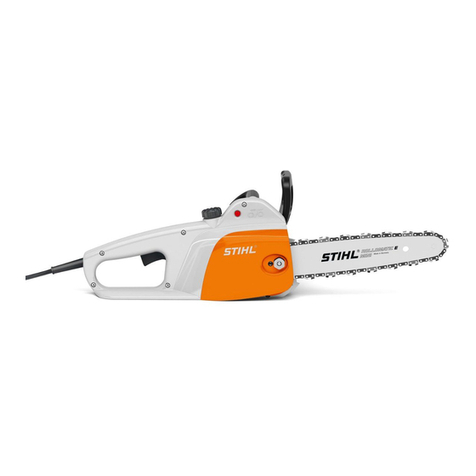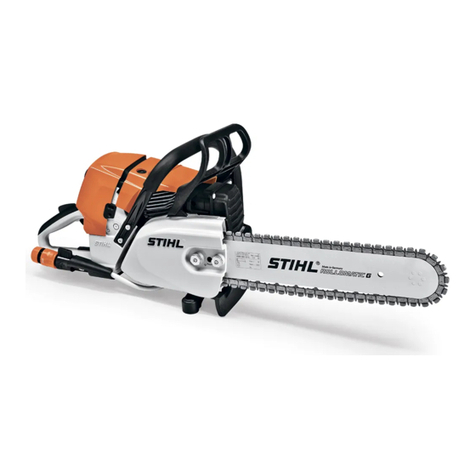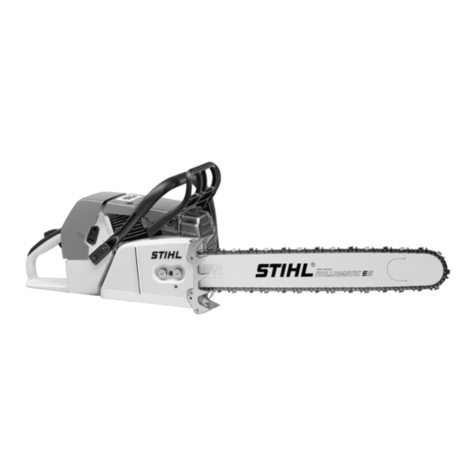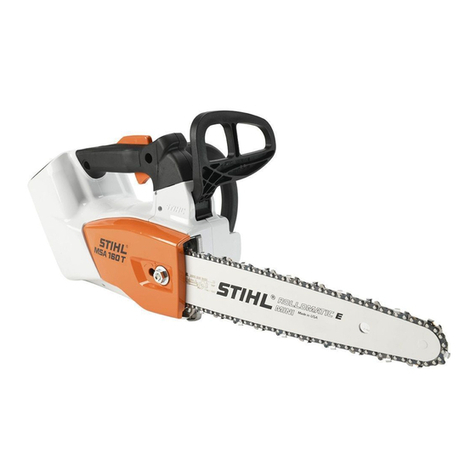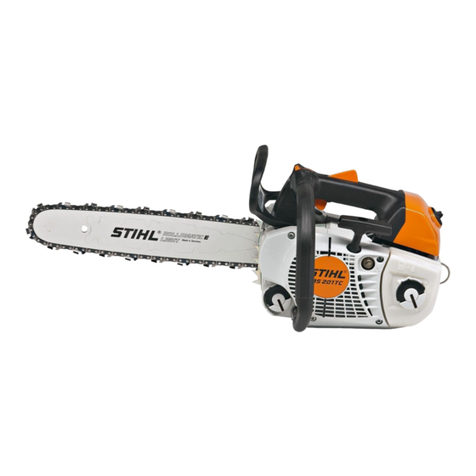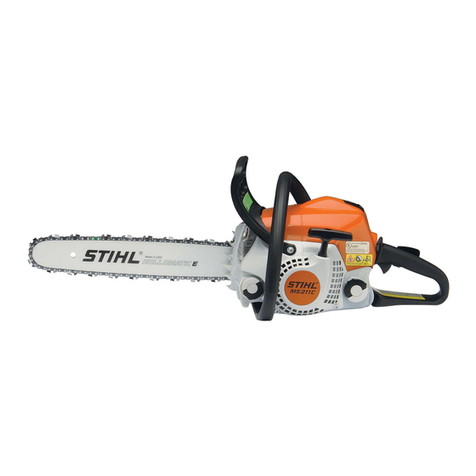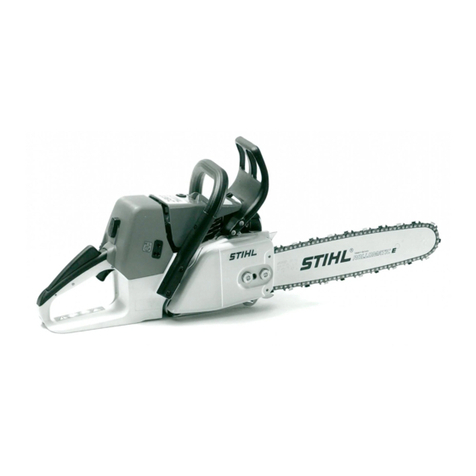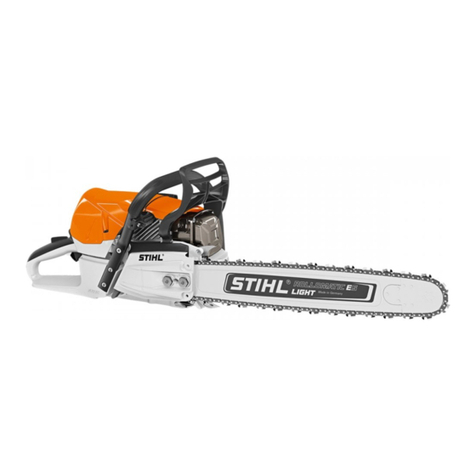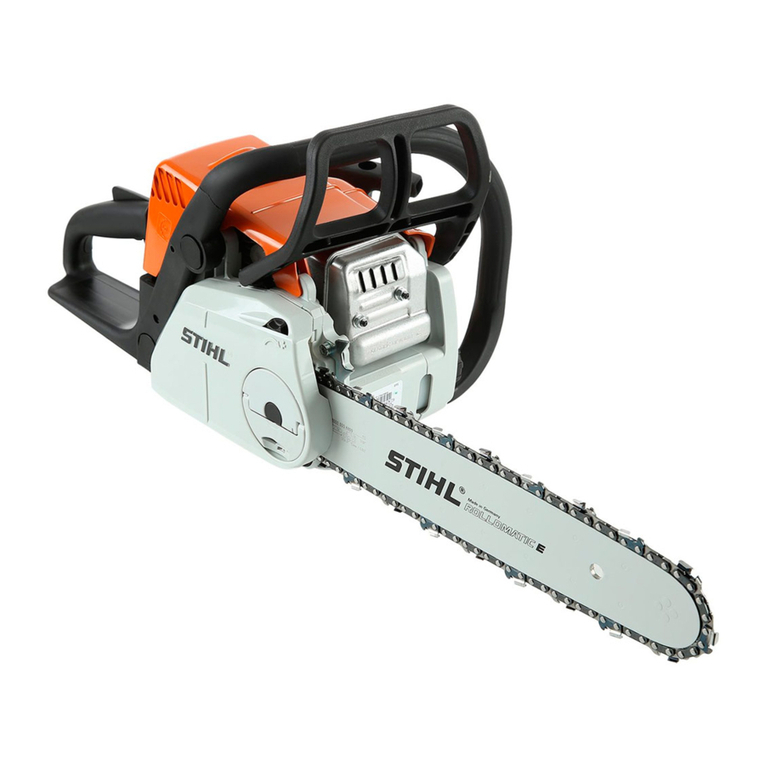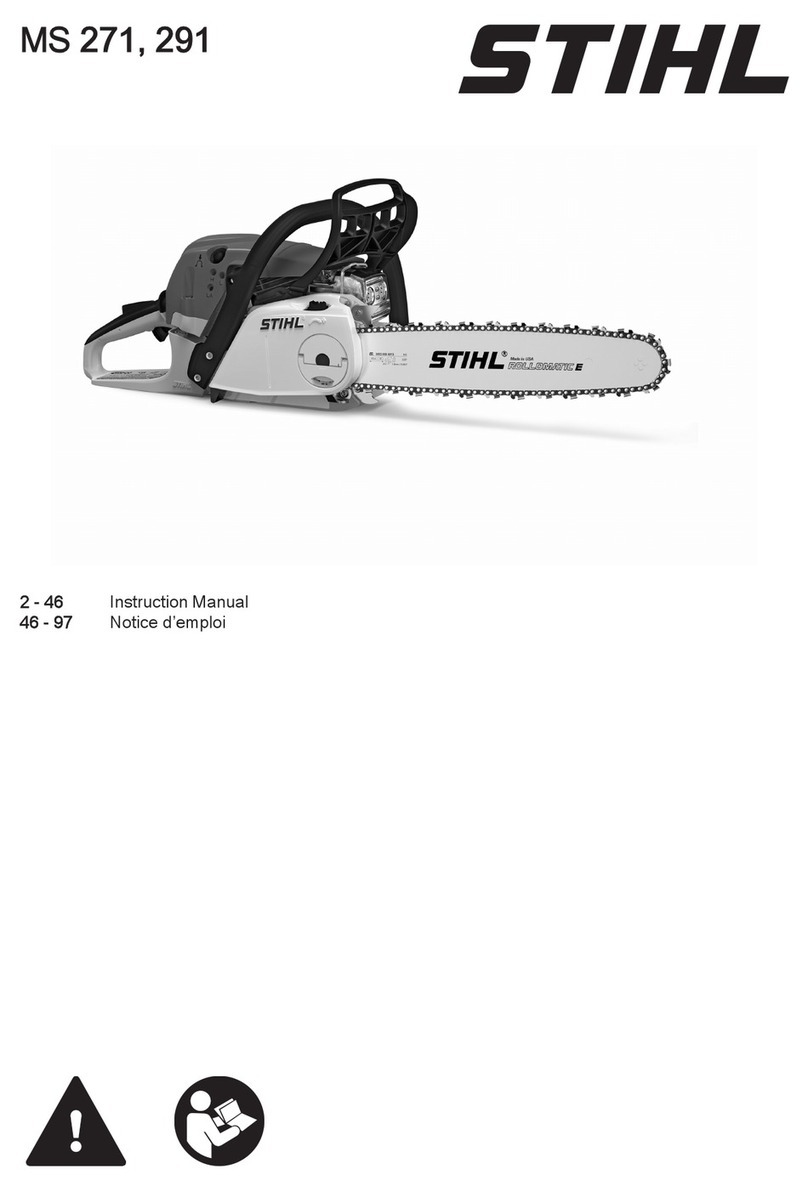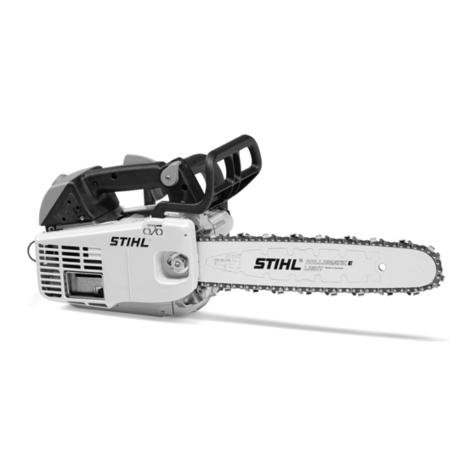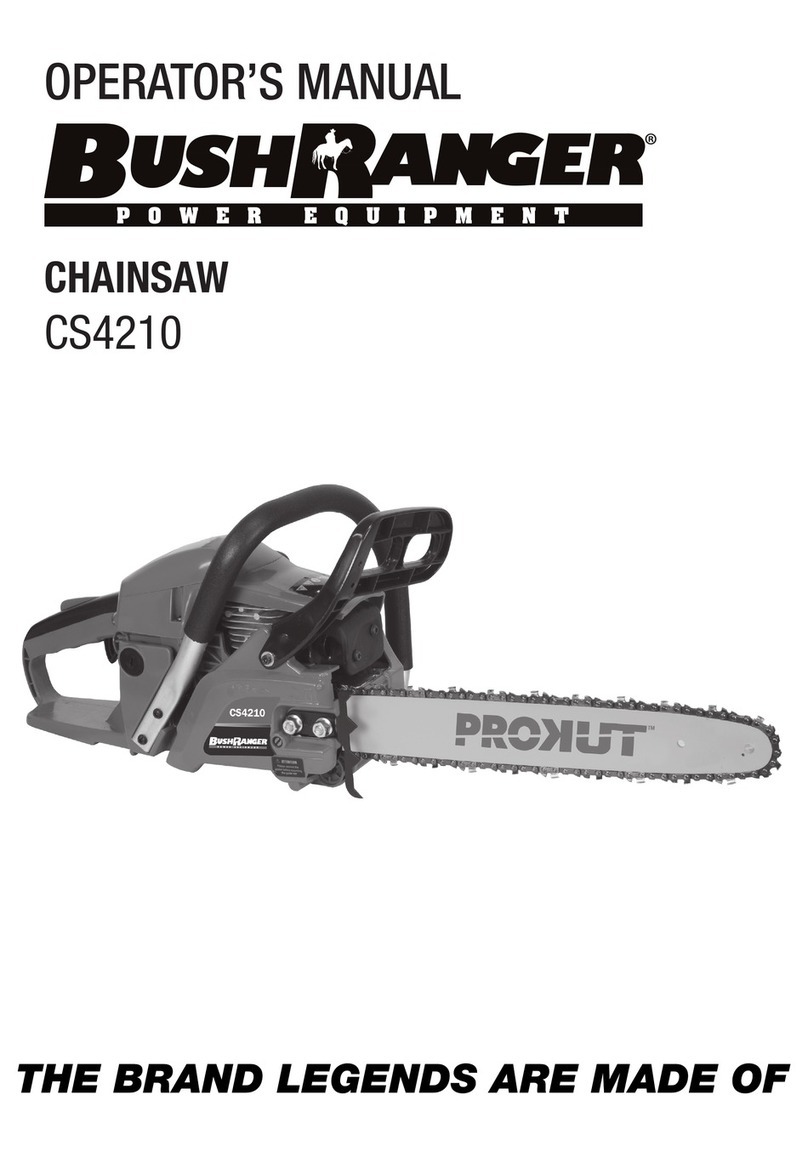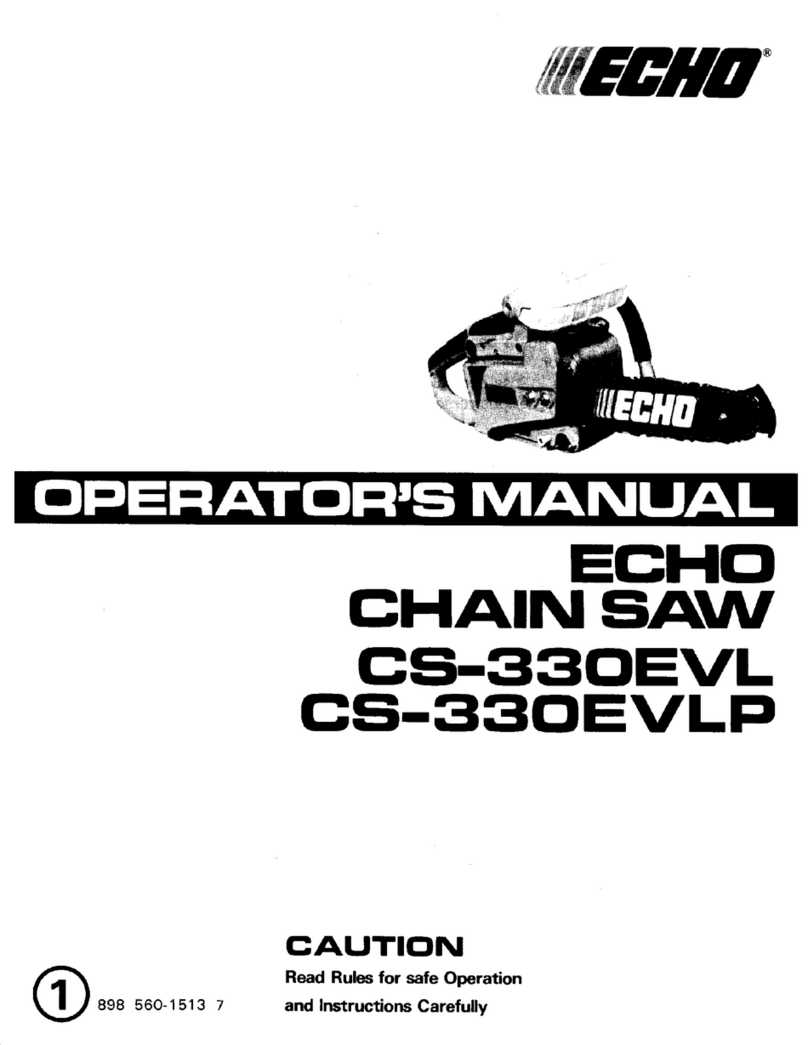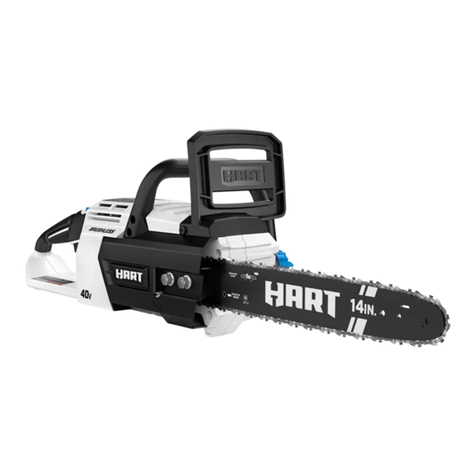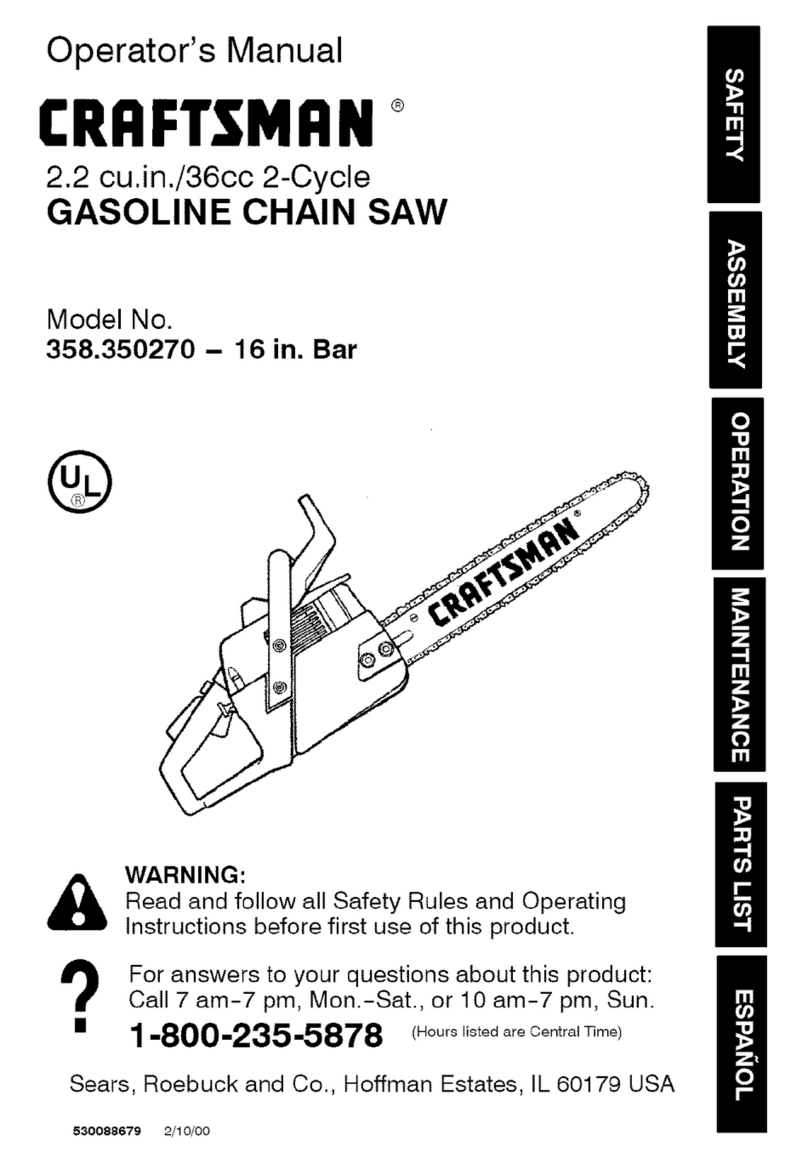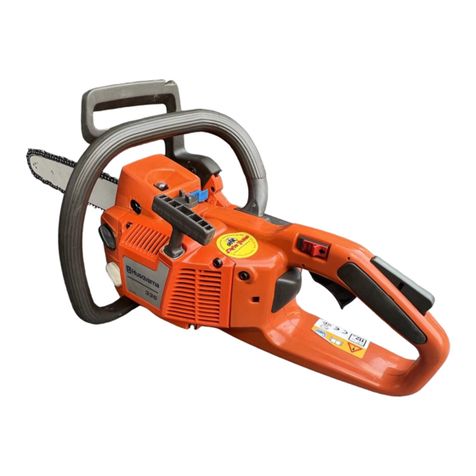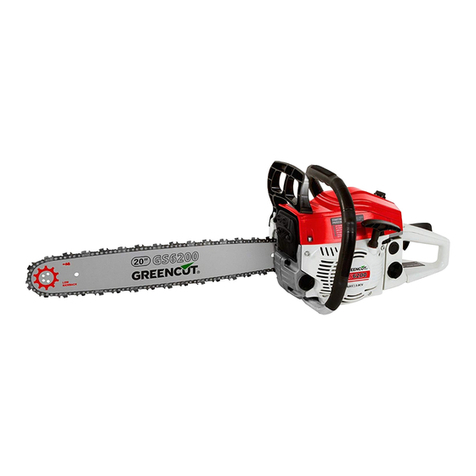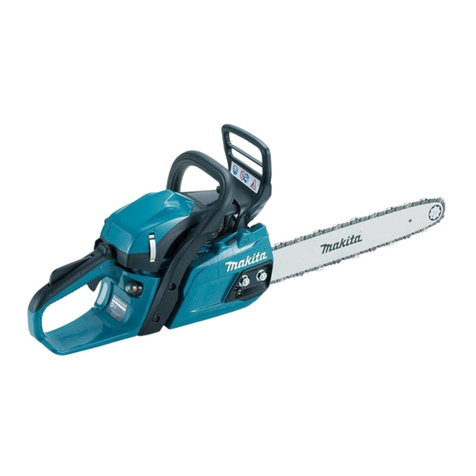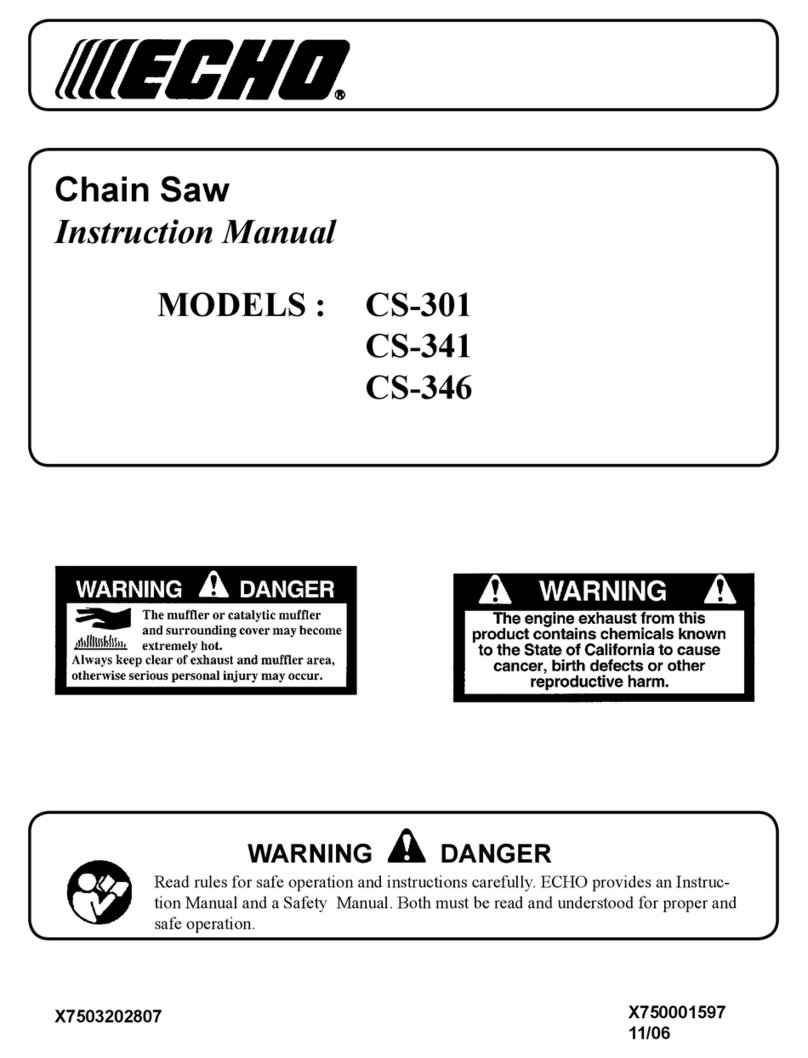
MSE 170 C, MSE 210 C
English
6
By vehicle: When transporting in a
vehicle, keep saw chain and bar covered
with the chain guard (scabbard).
Properly secure your chain saw to
prevent turnover and damage to the
chain saw.
Before Operation
Take off the chain guard (scabbard) and
inspect the chain saw for proper
condition and operation. (See the
maintenance chart near the end of the
instruction manual.)
WARNING
Always check your chain saw for proper
condition and operation before starting,
particularly the trigger switch, trigger
switch lockout, front handle guard and
cutting attachment. The trigger switch
and the trigger switch lockout must
move freely and always spring back to
the idle position. Ensure that the trigger
switch will not engage when the trigger
switch lockout is not pressed. Never
attempt to modify the controls or safety
devices.
For proper assembly of the bar and
chain follow the procedure described in
the chapter "Mounting the Bar and
Chain" of your instruction manual.
STIHL Oilomatic saw chain, guide bar
and sprocket must match each other in
gauge and pitch. Before replacing any
bar and chain, see the chapter entitled
"Specifications" in the instruction
manual and the chapter "Reactive
Forces including Kickback".
Since longer bars add weight and may
be more difficult to control, select the
shortest bar that will meet your cutting
needs.
WARNING
Proper tension of the saw chain is
extremely important. In order to avoid
improper setting, the tensioning
procedure must be followed as
described in your manual. Always make
sure the hexagonal nut(s) for the
sprocket cover is (are) tightened
securely after tensioning the saw chain
in order to secure the bar. Never start
the chain saw with the sprocket cover
loose. Check saw chain tension once
more after having tightened the nut(s)
and thereafter at regular intervals
(whenever the saw is shut off). If the saw
chain becomes loose while cutting,
switch off the motor, disconnect the
chain saw from the power supply and
then tighten. Never try to adjust the saw
chain while the motor is running!
WARNING
After adjusting a saw chain, start the
chain saw, let the motor run for a while,
then switch motor off and recheck saw
chain tension. Proper saw chain tension
is very important at all times.
Keep the handles clean and dry at all
times; it is particularly important to keep
them free of moisture, pitch, oil, grease
or resin in order for you to maintain a firm
grip and properly control your chain saw.
WARNING
Be sure that the guide bar and saw chain
are clear of you and all other
obstructions and objects, including the
ground. If the upper quadrant of the tip of
the bar touches any object, it may cause
kickback to occur (see section on
reactive forces). Never attempt to start
the chain saw when the guide bar is in a
cut or kerf.
For specific starting instructions, see the
appropriate section of your instruction
manual.
Electric Precautions
Special precautions for electric chain
saws must be observed to reduce the
risk of personal injury and property
damage from fire and electric shock.
This electric chain saw is double-
insulated.
WARNING
To reduce risk of serious or fatal injury
from electrocution, never use your chain
saw if casing around motor is cracked or
damaged.
WARNING
The electrical power voltage must agree
with the voltage specified on the chain
saw's name plate. Improper voltage may
cause the motor to overheat, which will
damage the chain saw and may cause
personal injury.
WARNING
To reduce the risk of
electrocution never work
in rain or wet places – the
electric motor is not
waterproof! Do not leave
the chain saw outdoors in
the rain and do not oper-
ate it if it shows any signs
of dampness.
